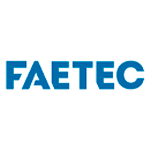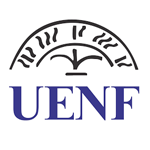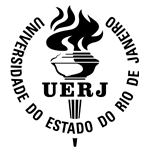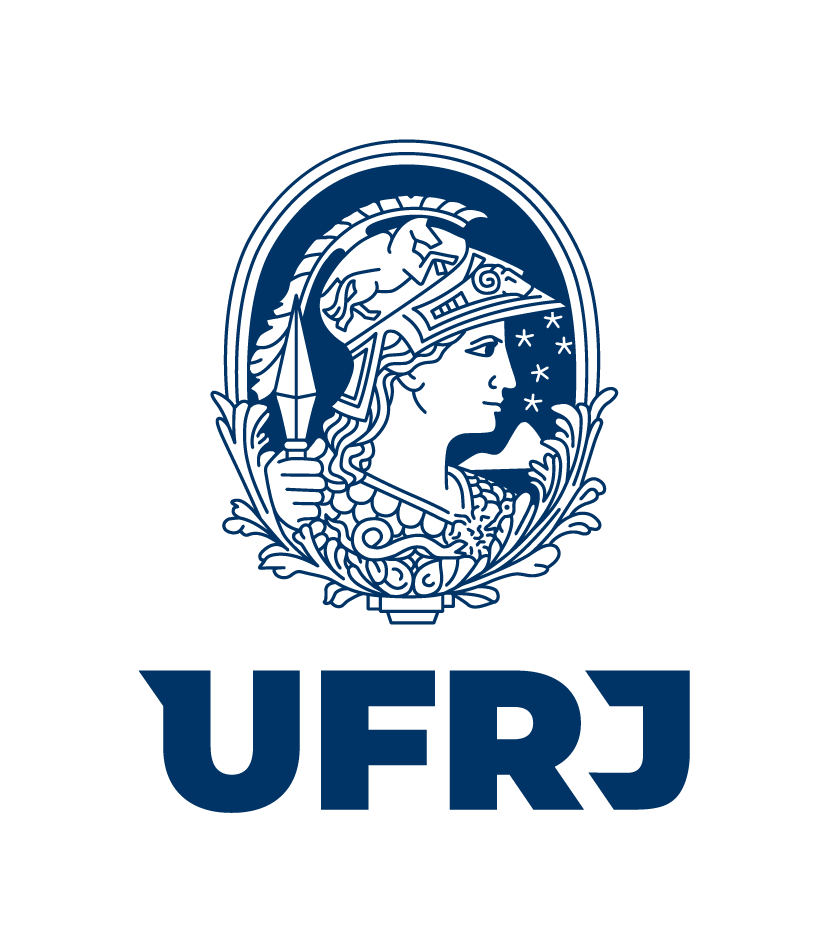A Educação a Distância no Contexto dos Corpos de Bombeiros: uma Revisão Sistemática de Literatura
DOI:
https://doi.org/10.18264/eadf.v15i1.2293Palavras-chave:
Educação a distância, Bombeiros, Corpo de bombeiros, Revisão sistemática de literatura, RSLResumo
Os Corpos de Bombeiros são instituições responsáveis por diversos serviços operacionais complexos e o desafio é conseguir transmitir conhecimento ao efetivo de maneira eficiente e com alcance. A educação a distância mostra-se como uma opção de solução para essa problemática. Este trabalho apresenta uma Revisão Sistemática de Literatura que teve por objetivo verificar como a educação a distância tem sido aplicada pelos Corpos de Bombeiros e quais impactos ela está proporcionando no ensino, fornecendo um panorama de como as instituições estão se posicionando no ensino digital remoto no decorrer do tempo. Para tanto, após a aplicação dos critérios de inclusão e exclusão, 22 estudos foram selecionados e analisados de acordo com as 5 questões de pesquisas elaboradas. Foi possível verificar que as corporações, predominantemente tradicionais com o foco nas instruções presenciais, vão aos poucos introduzindo a educação a distância, com tendência por formações híbridas, conseguindo encurtar distâncias e reduzir custos. Observou-se também que essa temática ainda precisa ser mais explorada pelas corporações e para isso resistências pessoais e organizacionais precisam ser rompidas. O panorama aqui apresentado visa proporcionar uma visão geral e atual da educação a distância no contexto dos corpos de bombeiros e contribuir para implementações futuras.
Palavras-chave: Educação a distância. Bombeiros. Corpo de bombeiros. Revisão sistemática de literatura. RSL.
Downloads
Referências
ALHAZZANI, N. MOOC’s impact on higher education. Social Sciences & Humanities Open, [S.L.], v. 2, n. 1, p. 100030, 2020. Elsevier BV. http://dx.doi.org/10.1016/j.ssaho.2020.100030
BEAUDOIN, M. The instructor's changing role in distance education. American Journal Of Distance Education, [S.L.], v. 4, n. 2, p. 21-29, jan. 1990. Informa UK Limited. http://dx.doi.org/10.1080/08923649009526701
BELDARRAIN, Y. Distance Education Trends: integrating new technologies to foster student interaction and collaboration. Distance Education, [S.L.], v. 27, n. 2, p. 139-153, ago. 2006. Informa UK Limited. http://dx.doi.org/10.1080/01587910600789498
CLARK, B. Comparison of Achievement of Students in On-Campus Classroom Instruction versus Satellite Teleconference Instruction, v. 01, p. 1-8, 1989.
COLLINS, J.; PASCARELLA, E.T. Learning on Campus and Learning at a Distance: A Randomized Instructional Experiment. Research in Higher Education 44, 315–326, 2003. https://doi.org/10.1023/A:1023077731874
DIAS, D. M.; BATTESTIN, V. Curso On-line Aberto e Massivo (MOOC) de Combate a Princípios de Incêndio: uma Entrega do Corpo de Bombeiros Militar do ES para a Sociedade. EaD em Foco, v. 12, n. 2, e1865, 2022. doi: https://doi.org/10.18264/eadf.v12i2.1865
DIAS, D. M.; PORTO, B.; BATTESTIN, V. Gestão da Plataforma EaD CBMES e o Panorama da Educação a Distância nos Corpos de Bombeiros, EaD em Foco, v. 13, n. 1, e2075, 2023. doi: doi: https://doi.org/10.18264/eadf.v13i1.2075
GOMES, U.; VASQUES, L.; SILVA, S.. O contexto da educação a distância no Corpo de Bombeiros Militar do Distrito Federal. EaD & Tecnologias Digitais na Educação. n 5, v. 4, 2016. https://doi.org/10.30612/eadtde.v5i7.6640
HOLMGREN, R. Firefighter training in Sweden: from face-to-face learning in training grounds to distance learning – a challenge for exercise instructors? Technology, Pedagogy and Education, v. 25, n. 2, p. 249–267, 14 mar. 2014. http://dx.doi.org/10.1080/1475939X.2014.968197
HOLMGREN, R. ICT as a Catalyst in Problem-Based Learning Processes? International Journal of Adult Vocational Education and Technology, v. 4, n. 2, p. 1–14, 1 abr. 2013. https://doi.org/10.4018/javet.2013040101
HOLMGREN, R. New ways of learning to fight fires? Learning processes and contradictions in distance and on-campus firefighter training in Sweden. Australasian Journal of Educational Technology, v. 31, n.2, p. 220-234, 2015. https://doi.org/10.14742/ajet.1865
HOLMGREN, R. Preparations for Practical Exercises in Vocational Education: Can ICT-based Distance Instruction be an Alternative to Face-to-face Instruction? An Empirical Contribution. Procedia - Social and Behavioral Sciences, v. 46, p. 1152–1161, 2012. https://doi.org/10.1016/j.sbspro.2012.05.266
HOLMGREN, R.; HAAKE, U.; SÖDERSTRÖM, T. Firefighter learning at a distance – a longitudinal study. Journal of Computer Assisted Learning, v. 33, n. 5, p. 500–512, 1 set. 2017. https://doi.org/10.1111/jcal.12196
HOLMGREN, R.; HAAKE, U.; SÖDERSTRÖM, T. Firefighting training at a distance–a longitudinal study. Journal of Vocational Education and Training, v. 71, n. 1, p. 65–86, 2 jan. 2019. https://doi.org/10.1080/13636820.2018.1464054
HOWELL, S. L.; WILLIAMS, P. B.; LINDSAY, N. K. Thirty-two trends affecting distance education: An informed foundation for strategic planning. Online journal of distance learning administration, v. 6, n. 3, p. 1-18, 2003.
KITCHENHAM, B.; CHARTERS, S. Guidelines for performing Systematic Literature Reviews in Software Engineering. Technical Report EBSE 2007-001, Keele University and Durham University Joint Report, 2007.
KLEIN, G.; CALDERWOOD, R.; CLINTON-CIROCCO, A. Rapid decision making on the fire ground. Proceedings of the Human Factors Society. 30th Annual Meeting, 1986.
KLEIN, G. Naturalistic Decision Making. Human Factors: The Journal of the Human Factors and Ergonomics Society, [S.L.], v. 50, n. 3, p. 456-460, jun. 2008. SAGE Publications. http://dx.doi.org/10.1518/001872008x288385
KLINGER, T. et al. Remote Training for Firefighter Group Commanders. Advances in Intelligent Systems and Computing. Anais...Springer Science and Business Media Deutschland GmbH, 2021. https://doi.org/10.1007/978-3-030-68198-2_71
LITTLEJOHN, A., and C. PEGLER. Preparing for Blended E-Learning. New York: Routledge, 2007.
MAK, H. C. Harnessing MOOCs for the Practice of Science. Nature Human Behaviour, v. 1, n. 1, 10 jan. 2017. http://dx.doi.org/10.1016/j.cels.2017.09.007
MANSUR, D. R.; ALTOÉ, R. O. BUSCad: uma ferramenta tecnológica de importação e tratamento de dados em revisão de literatura de pesquisas em educação matemática. In: BAIRRAL, M. A.; MENEZES, R. O. Elaboração e mapeamento de pesquisas com tecnologias: olhares e possibilidades. Porto Alegre: Fi, 2023, p. 260-292.
MIKULA, B. et al. Draft of Firefighter Education Process Through Distance Learning. 16th International Conference on Emerging eLearning Technologies and Applications (ICETA), p. 385-388, 2018. https://doi.org/10.1109/ICETA.2018.8572064
MILEN, D. The ability of firefighting personnel to cope with stress. Journal of Sustainable Social Change, v. 3, n. 1, p. 2, 2009.
MURPHY, D. L.; STANTON, L. M. A Hybrid Approach to Distance Education Technology: Tailor Made for the United States Fire Service, 2004.
REIS, V.; NEVES, C. Application of virtual reality simulation in firefighter training for the development of decision-making competence. 2019 International Symposium on Computers in Education (SIIE), Tomar, p. 1-6, Portugal, 2019. https://doi.org/10.1109/SIIE48397.2019.8970143
RUAN, L. Designing and developing internet reference services to support firefighter distance learners in Illinois. Em: Improving Internet Reference Services to Distance Learners. [s.l.] Taylor and Francis Inc., 2004. p. 147–172. http://dx.doi.org/10.1300/J136v09n01_11
SANCHEZ-GORDON, S; CALLE-JIMENEZ, T. Relevance of MOOCs for training of public sector employees. 2015 International Conference On Information Technology Based Higher Education And Training (Ithet), p. 1-5, Portugal, 2015. IEEE. http://dx.doi.org/10.1109/ithet.2015.7218016
SANTANA, W. M; ASCENDIDO, E. Formação continuada: a oferta de EaD ao efetivo do corpo de bombeiros militar de Mato Grosso. Revista EDaPECI. v. 21, n. 2, 2021. https://doi.org/10.29276/redapeci.2021.21.215509.44-56
SCHULTE, N; THIELSCH, M. T. Evaluation of firefighter leadership trainings. International Journal Of Emergency Services, [S.L.], v. 8, n. 1, p. 34-49, 2018. Emerald. http://dx.doi.org/10.1108/ijes-03-2018-0020
SHAGIAKHMETOVA, M. N. et al. Primary teachers difficulties related to compulsory distance education during COVID-19. Contemporary Educational Technology, v. 14, n. 2, p. ep357, 2022. https://doi.org/10.30935/cedtech/11589
SOUSA, L. Representações sociais de policiais militares, sobre educação a distância no âmbito da rede EAD/SENASP. Dissertação de mestrado. UFC, 2012.
SOUZA, E. S.; VASQUES, L. V.; SILVA, S. W. A gestão da Educação à Distância no Corpo de Bombeiros Militar do Distrito Federal. EaD em Foco, [S. l.], v. 7, n. 2, 2017. https://doi.org/10.18264/eadf.v7i2.585
TABER, N. Emergency response: Elearning for paramedics and firefighters. Simulation and Gaming, v. 39, n. 4, p. 515–527, 2008. https://doi.org/10.1177/1046878107306669
TOBISOVA, A.; BLASKO, D.; VAJDOVA, I.; SZABO, S.; SZABO, S.; SVAB, P. Proposal of testing process of firefighters on the issue of air accidents to increase the competence of Fire and rescue services members. 2019 New Trends In Aviation Development (Ntad), [S.L.], p. 185-188, set. 2019. IEEE. http://dx.doi.org/10.1109/ntad.2019.8875551
TRACEY, E. A. Firefighter workplace learning: an exploratory case study. University of Rochester, 2014.
WESTON, B. W.; GAITHER, J.; SCHULZ, K. Innovative Approaches to Emergency Medical Services Fellowship Challenges. Western Journal of Emergency Medicine, v. 21, n. 2, p. 412–422, 2020. https://doi.org/10.5811/westjem.2019.10.43830
WONG, K. H. L.; XIE, D.Y. Fire Safety Management Strategy of Complex Developments. Procedia Engineering, [S.L.], v. 71, p. 410-420, 2014. Elsevier BV. http://dx.doi.org/10.1016/j.proeng.2014.04.059
ZAMBONI, A. et al. StArt: Uma Ferramenta Computacional de Apoio à Revisão Sistemática. Salão de Ferramentas. Congresso Brasileiro de Software, p. 91–96, 2010.
ZHANG, Y et al. Influence on the Training Mode of Talents in Fire Engineering Colleges Based on OBE. International Journal Of Learning And Teaching, [S.L.], p. 108-114, 2022. EJournal Publishing. http://dx.doi.org/10.18178/ijlt.8.2.108-114
Downloads
Publicado
Como Citar
Edição
Seção
Licença
Copyright (c) 2025 EaD em Foco

Este trabalho está licenciado sob uma licença Creative Commons Attribution 4.0 International License.
Todos os artigos publicados na Revista EaD em Foco recebem a licença Creative Commons - Atribuição 4.0 Internacional (CC BY 4.0). Todas as publicações subsequentes, completas ou parciais, deverão ser feitas com o reconhecimento, nas citações, da Revista EaD em Foco como a editora original do artigo.













